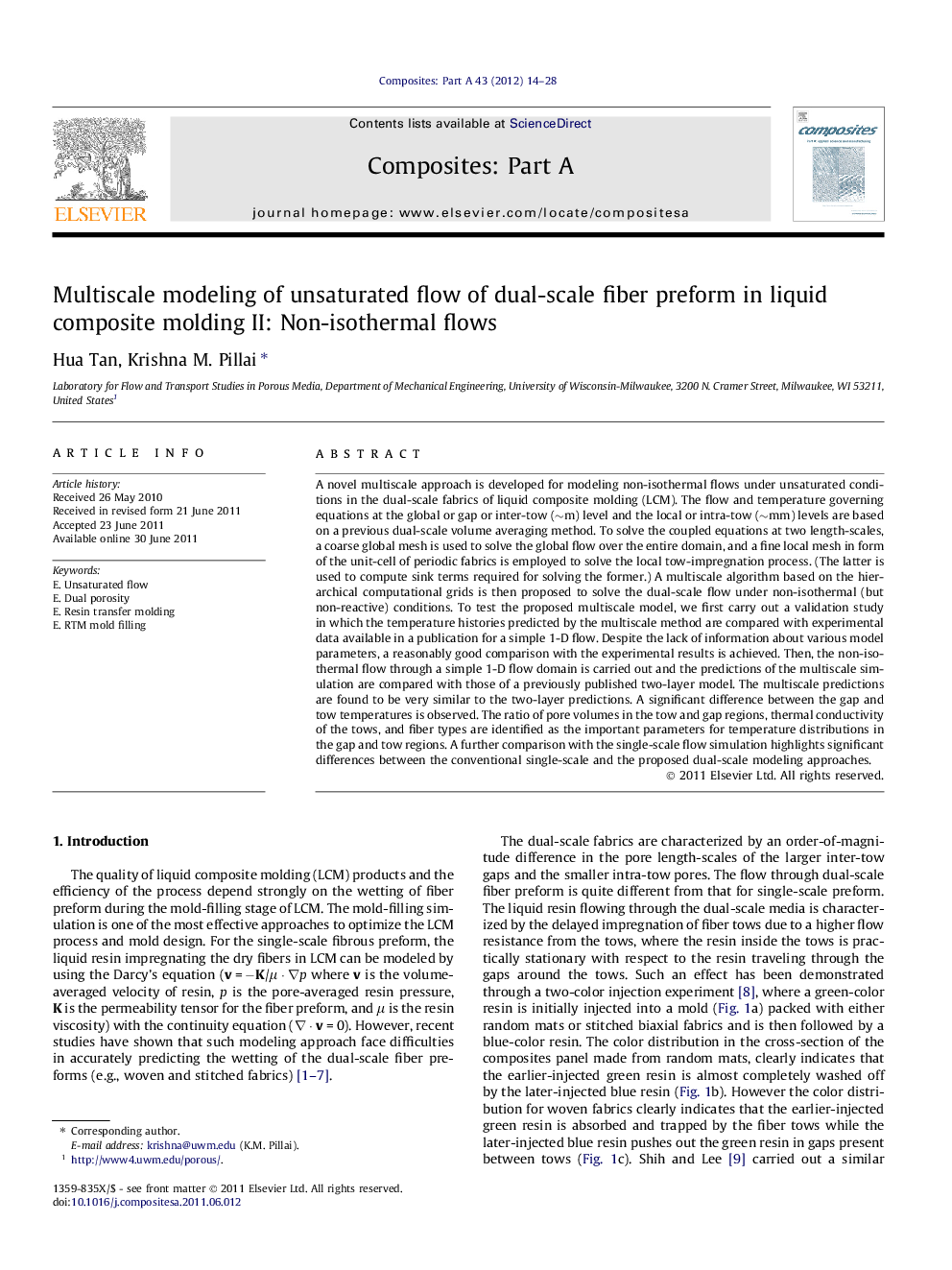| کد مقاله | کد نشریه | سال انتشار | مقاله انگلیسی | نسخه تمام متن |
|---|---|---|---|---|
| 1466501 | 990062 | 2012 | 15 صفحه PDF | دانلود رایگان |

A novel multiscale approach is developed for modeling non-isothermal flows under unsaturated conditions in the dual-scale fabrics of liquid composite molding (LCM). The flow and temperature governing equations at the global or gap or inter-tow (∼m) level and the local or intra-tow (∼mm) levels are based on a previous dual-scale volume averaging method. To solve the coupled equations at two length-scales, a coarse global mesh is used to solve the global flow over the entire domain, and a fine local mesh in form of the unit-cell of periodic fabrics is employed to solve the local tow-impregnation process. (The latter is used to compute sink terms required for solving the former.) A multiscale algorithm based on the hierarchical computational grids is then proposed to solve the dual-scale flow under non-isothermal (but non-reactive) conditions. To test the proposed multiscale model, we first carry out a validation study in which the temperature histories predicted by the multiscale method are compared with experimental data available in a publication for a simple 1-D flow. Despite the lack of information about various model parameters, a reasonably good comparison with the experimental results is achieved. Then, the non-isothermal flow through a simple 1-D flow domain is carried out and the predictions of the multiscale simulation are compared with those of a previously published two-layer model. The multiscale predictions are found to be very similar to the two-layer predictions. A significant difference between the gap and tow temperatures is observed. The ratio of pore volumes in the tow and gap regions, thermal conductivity of the tows, and fiber types are identified as the important parameters for temperature distributions in the gap and tow regions. A further comparison with the single-scale flow simulation highlights significant differences between the conventional single-scale and the proposed dual-scale modeling approaches.
Journal: Composites Part A: Applied Science and Manufacturing - Volume 43, Issue 1, January 2012, Pages 14–28